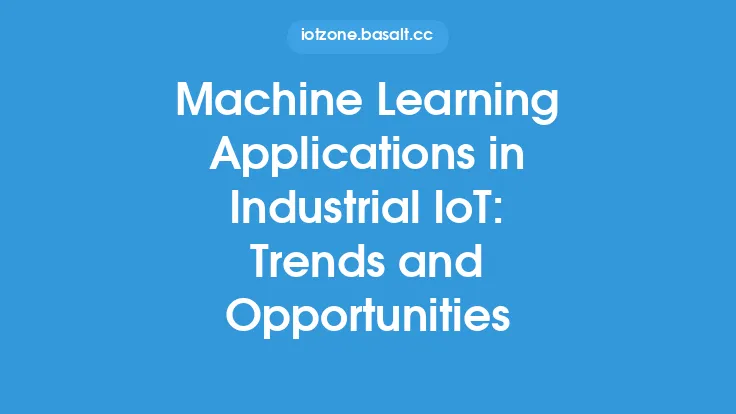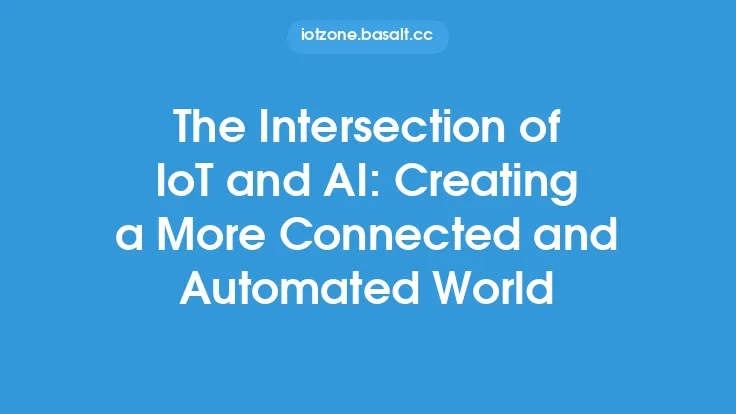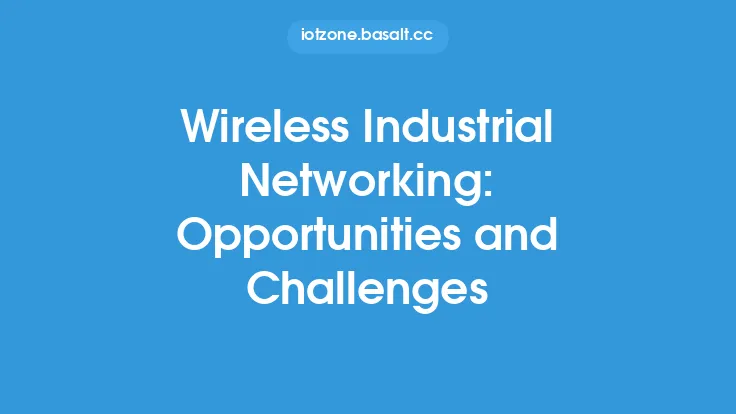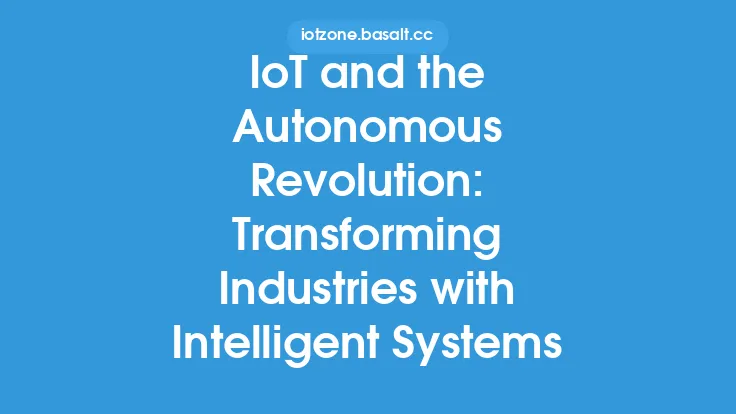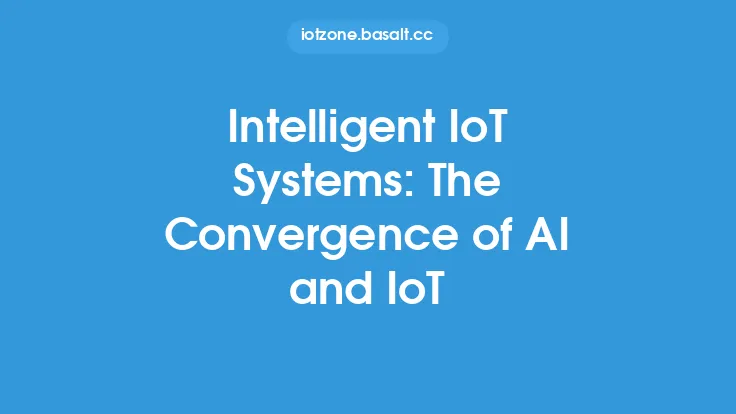The integration of Internet of Things (IoT) technology in educational settings has the potential to revolutionize the way we learn and interact with our environment. By creating intelligent learning environments, IoT can enhance the overall educational experience, making it more engaging, personalized, and effective. In this article, we will explore the opportunities and challenges of creating intelligent learning environments with IoT, and discuss the technical aspects of implementing such systems.
Introduction to Intelligent Learning Environments
Intelligent learning environments refer to physical or virtual spaces that are equipped with IoT devices and sensors to collect data, provide real-time feedback, and adapt to the needs of learners. These environments can be designed to support various learning styles, abilities, and preferences, making education more inclusive and accessible. IoT devices such as sensors, cameras, and microphones can be used to monitor and analyze student behavior, engagement, and performance, providing valuable insights for teachers and educators.
Technical Requirements for Intelligent Learning Environments
Creating intelligent learning environments requires a range of technical components, including IoT devices, data analytics platforms, and communication protocols. IoT devices such as sensors, actuators, and cameras can be used to collect data on various parameters such as temperature, lighting, noise levels, and student activity. This data can be transmitted to a central server or cloud-based platform for analysis and processing. Data analytics platforms such as machine learning algorithms and statistical models can be used to analyze the data and provide insights on student behavior and performance.
Opportunities of Intelligent Learning Environments
The opportunities of intelligent learning environments are numerous and varied. Some of the key benefits include:
- Personalized learning: Intelligent learning environments can be designed to adapt to the needs and abilities of individual students, providing personalized learning experiences that cater to their unique needs and preferences.
- Improved engagement: IoT devices such as interactive whiteboards, virtual reality headsets, and gamification platforms can be used to create engaging and immersive learning experiences that motivate students to learn.
- Enhanced accessibility: Intelligent learning environments can be designed to support students with disabilities, providing them with equal access to educational resources and opportunities.
- Real-time feedback: IoT devices such as sensors and cameras can be used to provide real-time feedback on student performance, allowing teachers to identify areas of improvement and provide targeted support.
Challenges of Intelligent Learning Environments
Despite the opportunities, there are several challenges associated with creating intelligent learning environments. Some of the key challenges include:
- Data privacy and security: The collection and analysis of student data raises concerns about data privacy and security, particularly in the context of IoT devices and cloud-based platforms.
- Technical infrastructure: The implementation of intelligent learning environments requires significant investment in technical infrastructure, including IoT devices, data analytics platforms, and communication protocols.
- Teacher training: Teachers may require training and support to effectively integrate IoT devices and data analytics into their teaching practices.
- Equity and access: The adoption of intelligent learning environments may exacerbate existing inequalities in education, particularly in terms of access to technology and digital literacy.
Case Studies and Examples
There are several examples of intelligent learning environments being implemented in educational settings around the world. For example, the University of California, Los Angeles (UCLA) has developed an IoT-based learning environment that uses sensors and cameras to monitor student behavior and engagement. The system provides real-time feedback to teachers, allowing them to adjust their teaching practices and improve student outcomes. Similarly, the Singapore University of Technology and Design (SUTD) has developed an intelligent learning environment that uses machine learning algorithms to analyze student data and provide personalized learning recommendations.
Future Directions and Research Agenda
The development of intelligent learning environments is an active area of research, with several future directions and research agenda. Some of the key areas of research include:
- Developing more sophisticated data analytics platforms that can analyze complex data sets and provide actionable insights for teachers and educators.
- Investigating the impact of intelligent learning environments on student outcomes, including academic achievement, engagement, and motivation.
- Developing more effective teacher training programs that can support the integration of IoT devices and data analytics into teaching practices.
- Examining the ethical implications of collecting and analyzing student data, including issues related to data privacy, security, and equity.
Conclusion
Creating intelligent learning environments with IoT has the potential to revolutionize the way we learn and interact with our environment. While there are several opportunities and benefits associated with intelligent learning environments, there are also challenges and limitations that need to be addressed. By understanding the technical requirements, opportunities, and challenges of intelligent learning environments, educators and researchers can work together to develop more effective and inclusive learning environments that support the diverse needs of students.
